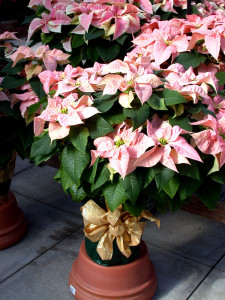How to Choose the Right Poinsettia for You?
go.ncsu.edu/readext?218396
en Español / em Português
El inglés es el idioma de control de esta página. En la medida en que haya algún conflicto entre la traducción al inglés y la traducción, el inglés prevalece.
Al hacer clic en el enlace de traducción se activa un servicio de traducción gratuito para convertir la página al español. Al igual que con cualquier traducción por Internet, la conversión no es sensible al contexto y puede que no traduzca el texto en su significado original. NC State Extension no garantiza la exactitud del texto traducido. Por favor, tenga en cuenta que algunas aplicaciones y/o servicios pueden no funcionar como se espera cuando se traducen.
Português
Inglês é o idioma de controle desta página. Na medida que haja algum conflito entre o texto original em Inglês e a tradução, o Inglês prevalece.
Ao clicar no link de tradução, um serviço gratuito de tradução será ativado para converter a página para o Português. Como em qualquer tradução pela internet, a conversão não é sensivel ao contexto e pode não ocorrer a tradução para o significado orginal. O serviço de Extensão da Carolina do Norte (NC State Extension) não garante a exatidão do texto traduzido. Por favor, observe que algumas funções ou serviços podem não funcionar como esperado após a tradução.
English
English is the controlling language of this page. To the extent there is any conflict between the English text and the translation, English controls.
Clicking on the translation link activates a free translation service to convert the page to Spanish. As with any Internet translation, the conversion is not context-sensitive and may not translate the text to its original meaning. NC State Extension does not guarantee the accuracy of the translated text. Please note that some applications and/or services may not function as expected when translated.
Collapse ▲According to Erv Evans, select plants which have brightly colored bracts and dark green foliage covering most of the stem. Avoid plants that have dropped their leaves, are wilted, or have faded, torn, or discolored bracts. This indicates the plants were not properly cared for (i.e. not watered, boxed or sleeved too long, or diseased) and the length of enjoyment of the plant will be dramatically shortened.
 Traditionally, the presence or absence of the true flowers or cyathia (the small, round, yellow parts located in the center of the bracts) has been the measurement of freshness. As the plant ages, the cyathia typically drop. However, many of the newer cultivars have improved cyathia retention or there are few cyathia present, which limits the use of cyathia as an indicator of age.
Traditionally, the presence or absence of the true flowers or cyathia (the small, round, yellow parts located in the center of the bracts) has been the measurement of freshness. As the plant ages, the cyathia typically drop. However, many of the newer cultivars have improved cyathia retention or there are few cyathia present, which limits the use of cyathia as an indicator of age.
Since poinsettias are tropical plants, temperatures below 50°F will cause chilling injury. The “selling” establishment should sleeve or cover the plant when the plants could be exposed to temperatures below 50°F. Poinsettia plants should be kept in a warm vehicle, but not placed in the trunk. Chilling injury causes the bracts to have a blue or white discoloration and possibly result in leaf drop.


